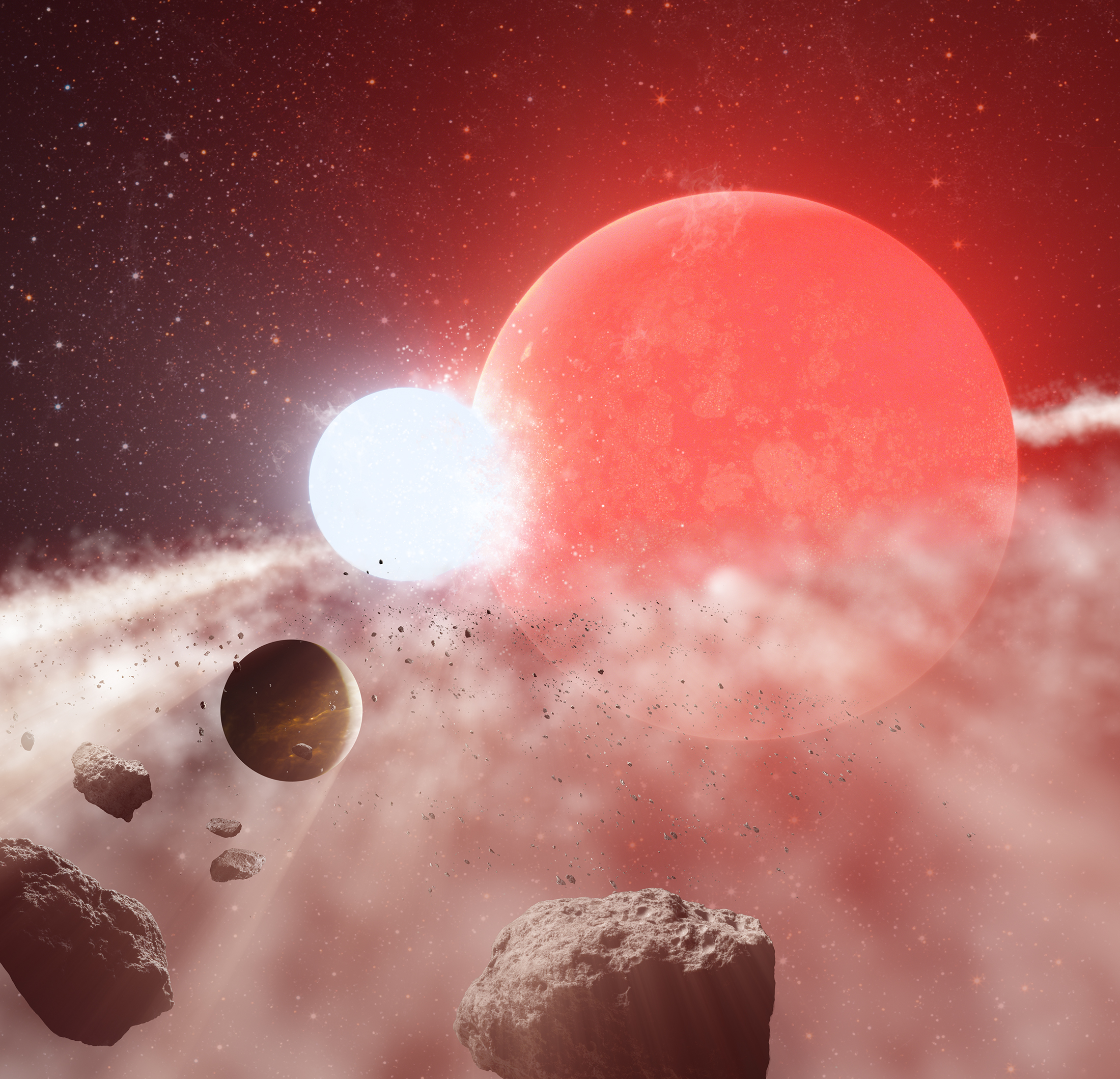The planet Haila accompanies a star that should, in the ordinary course of stellar evolution, have expanded far beyond Haila’s orbit before shrinking again. No planet could survive being swallowed by its star like that, leaving astronomers with a mystery they’re struggling to resolve.
As stars age they puff up to become red giants, prior to expelling their outer layers and becoming white dwarfs. When the Sun does this, it will grow large enough to swallow both Mercury and Venus, although a heat-blasted Earth may narrowly escape. After this there will be a period of helium-fusing prior to its eventual collapse to become a white dwarf.
The star 8 Ursae Minoris, Baekdu to its friends, has completed this great expansion, and now has a helium-fusing core. This makes the presence of Haila in an orbit barely wider than Mercury’s quite the conundrum. A new paper confirms Haila’s existence and offers some possible explanations.
“This is a planet that shouldn’t exist,” said Dr Ben Montet of the University of New South Wales in a statement. “It should have been ingested by its star.”
The most obvious explanation for Haila is also the least interesting, and the least likely, the paper concludes. Haila might once have been on a more distant orbit and some disruption caused it to spiral in. However, the stability and near-circular shape of its orbit make this scenario very improbable, modeling indicates, requiring a barely plausible series of events.
Instead, Montet and co-authors suspect Baekdu used to be two stars locked in a tight orbit. One of these evolved through its life cycle and ended up as a small white dwarf that was eventually swallowed by the companion. This short-circuited the supergiant stage, meaning the combined star never reached the size that would be expected, allowing Haila to survive.
Haila would therefore have been a circumbinary or Tatooine-like planet, but there would have been no one to appreciate the Tatooine sunsets. Haila is a gas giant approximately 65 percent more massive than Jupiter. Even if it has any moons, the searing heat from such nearby stars would never have allowed them to be habitable.

When a red giant and white dwarf merged to become Baekdu, a disk of debris would have been thrown off. It’s possible Haila formed from this disk.
Image credit: W. M. Keck Observatory/Adam Makarenko
There’s a third possibility as well, also much more likely than the orbital contraction idea, which is that Haila is a “second-generation planet” formed out of a gas cloud thrown off during the stars’ merger. Such second-generation planets have been theorized before, and the opportunity to study one is a mouth-watering prospect for planetary scientists.
As if all this was not complicated enough, the team that studied Baekdu using the Keck Observatory and Transiting Exoplanet Survey Satellite (TESS) found hints of a more distant large object. They think this is more likely a small star than a large planet, although it has not been seen directly, and orbits at least as far from Baekdu as Jupiter is from the Sun.
Enough evidence for Haila emerged in 2015 that both planet and star were considered worthy of a name, but prior to this study there was still some uncertainty as to whether it was real. The latest observations confirmed it. More importantly, they established that Baekdu is in the core helium-fusing or “red-clump” phase, having used up all its hydrogen, rather than still being on the rise, making Haila’s existence a pressing issue.
Evidence for the idea of a recent stellar merger comes from Baekdu’s abundant lithium, something just one percent of the 100,000 or so red giants we have studied possess. Stars burn lithium in their atmospheres, so it is usually only seen in very young stars, or those that have recently consumed a planet or star.
Montet told IFLScience no one expected to find planets in 90-day orbits around red giants, but plenty of searches have been conducted looking for them further out. Since such studies would probably notice a closer-in planet if it was there, it certainly seems objects like Haila are uncommon. Nevertheless, where there is one there are probably others, and the authors are keen to seek them out to help solve the mystery of Haila’s improbable existence.
The study is published in Nature.
Source Link: Inner Planets Shouldn’t Survive Dying Stars’ Expansions. Somehow This One Did